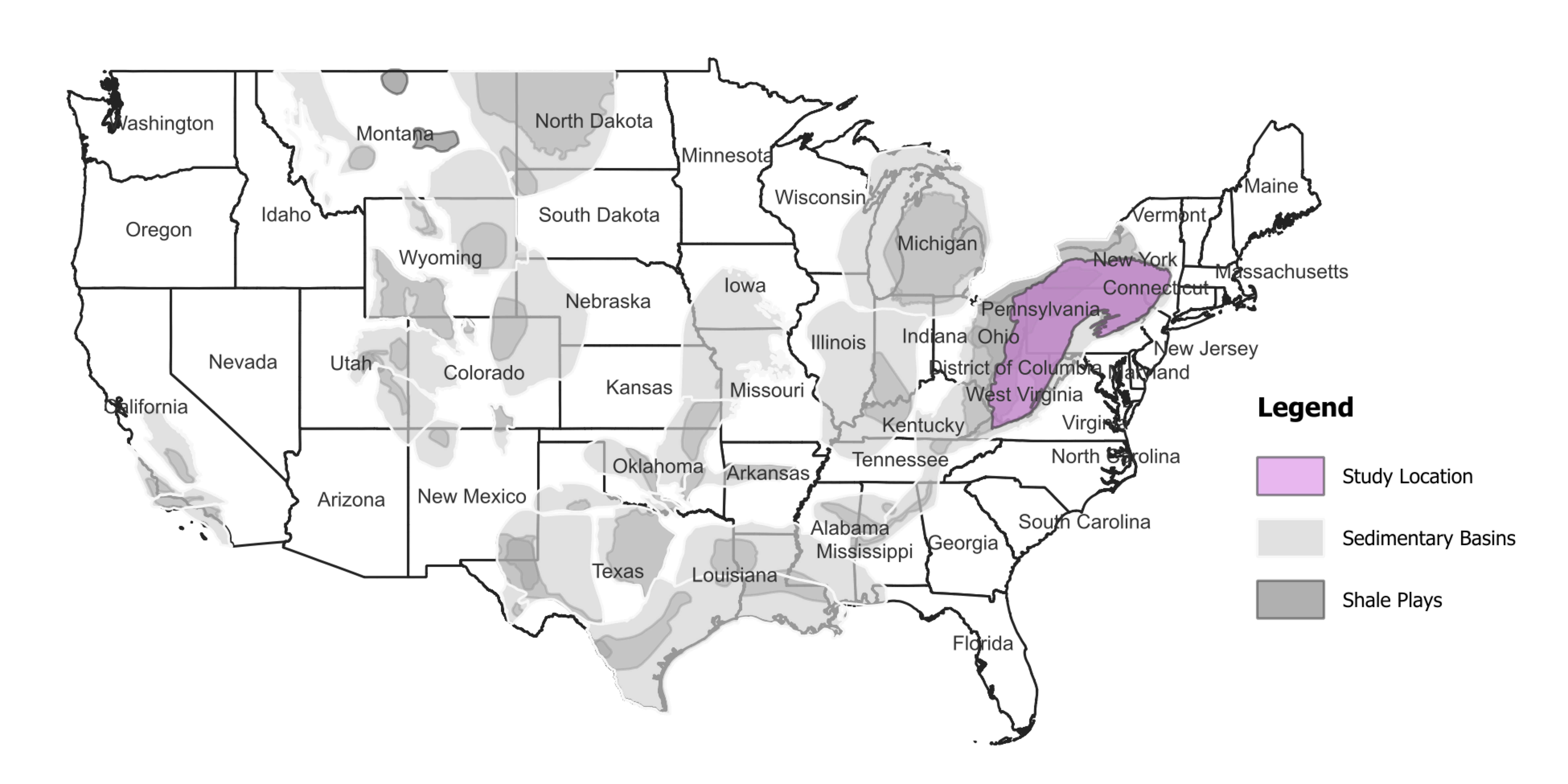Long-term criteria and toxic pollutants trends and community exposures over the Marcellus Shale in the U.S.
The study is complete and now undergoing peer review and an independent quality assurance/quality control audit before HEI Energy releases the research report in the first part of 2026.
This study aims to assess trends in air quality and community exposures in the Marcellus Shale region and whether any might be explained by changes in oil and gas development-related operations or governance. The analysis will focus on local and regional exposures to criteria and hazardous air pollutants from 2002-2021, with special attention toward historically disadvantaged communities. The investigators are achieving their research aims with the following steps:
- Perform a long-term emissions trend analysis by integrating bottom-up oil and gas emissions and ambient measurements of criteria and select hazardous air pollutant concentrations.
- Conduct a long-term air quality trend analysis by applying a chemical transport model to simulate the criteria and select hazardous air pollutant concentrations over the region.
- Use a more advanced chemical transport model that employs machine-learning to investigate sources of and control strategies for oil and gas emissions.
- Apply a county-level community health vulnerability index approach to identify disproportionately exposed communities.



